ALL ABOUT RAILROAD SIGNS: HOW TO RECOGNIZE AND REACT APPROPRIATELY TO THEM
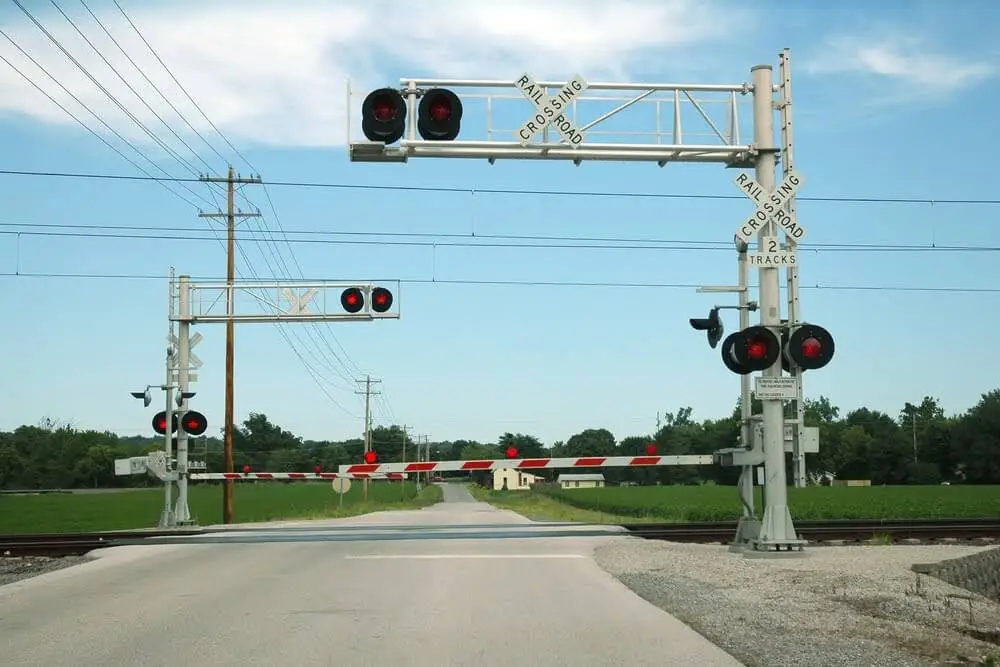
Railroads will typically have signs posted in order to alert people and vehicles to the nearby conditions of trains or tracks. Like railroad signals, they are vital as warnings and guides, so it’s important to have a basic understanding of railroad sign meanings.
This blog will list many of the common railroad signs you may come across, as well as how to appropriately react to them. You may also find some commonly asked questions related to railroad signs here.
Types of Railroad Crossing Signs
Two different types of signs can be found on or around railroads: Passive and Active. The main difference between the two is how they communicate information to the vehicle drivers coming across them.
Passive Crossing Signs
So what is a passive railroad crossing sign? Quite simply, they are the typical signs that are similar to the ones you see on the road. They are found as you are approaching the train tracks and communicate information that the driver should (in general) keep in mind.
Here is a list of common passive railroad crossing signs you may find near tracks and their meanings:
- Railroad Advance Warning Sign
-
- Alert drivers that the road they are currently on will cross railroad tracks. Drivers are encouraged to stop, look both ways on tracks ahead, and be cautious of any upcoming trains.
-
- Low Ground Clearance Grade Crossing Sign
-
-
- Gives a heads-up to drivers of long-wheelbase vehicles/trailers that they may need to take a bit more caution crossing tracks. They must give themselves enough time to clear tracks.
-
- Advance Warning Signs for Side Streets
-
- Alerts drivers of an incoming highway-rail intersection upon making an immediate right or left turn. Drivers should be vigilant about making sudden stops and incoming traffic.
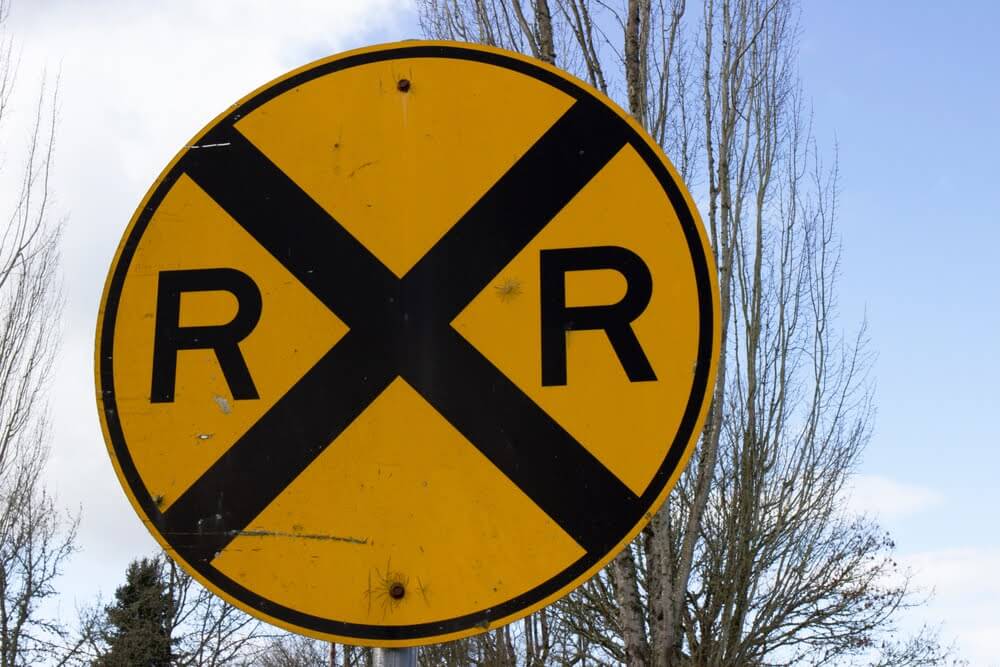
Passive railroad signs may also appear as markings on the road/pavement leading up to the tracks. The most common is a large white X with an R on each side (identical to the advance warning sign) painted on the road.
The pavement markings are meant to signal a safe place for drivers to stop right before train tracks. As a general rule, stay behind the bottom line as a train is passing (or, if there are no markings such as with gravel roads, stop no less than 15 feet from the tracks).
There are other signs you may find either right before or on the railroad tracks themselves. Here are a few you should be familiar with:
- Crossbuck Sign
-
-
- Acts as a yield sign, reminding drivers to give incoming trains the right of way
-
- Emergency Notification System Sign
-
-
- Contains information such as the railroad’s emergency phone and USDOT Crossing Number (which you should contact should you find yourself stuck or in danger on the tracks).
-
- Multiple Track Sign
-
- Alerts drivers to the number of tracks present ahead; meant to remind drivers not to immediately cross tracks after one train has passed, as there can always be another that follows right after them on another track.
Active Crossing Signs
With active signs, what sets them apart from passive signs is the fact that they tend to be electronic-based. While passive signs present information that should be known in general, active signs communicate more immediate updates to train and track conditions.
These types of signs typically involve flashing lights, sounds, and/or moving mechanisms that alert drivers (and sometimes the trains themselves) to important changes.
Here are some examples of active railroad signs that can be found at the tracks themselves and that you should be aware of in order to act appropriately:
-
- Flashing Red Lights (with/without lights)
- Signals that a train is approaching and that any vehicle coming toward the tracks should stop until the lights/signal goes out.
- Flashing Red Lights (with/without lights)
-
- Flashing Red Lights with Gates (aka, Railroad Crossing Lights)
- Lights that signal the same as above, but will have the added precaution of railroad crossing gates. It is against the law to attempt to go around lowered gates, so as always, wait until they have risen to move over tracks.
- Flashing Red Lights with Gates (aka, Railroad Crossing Lights)
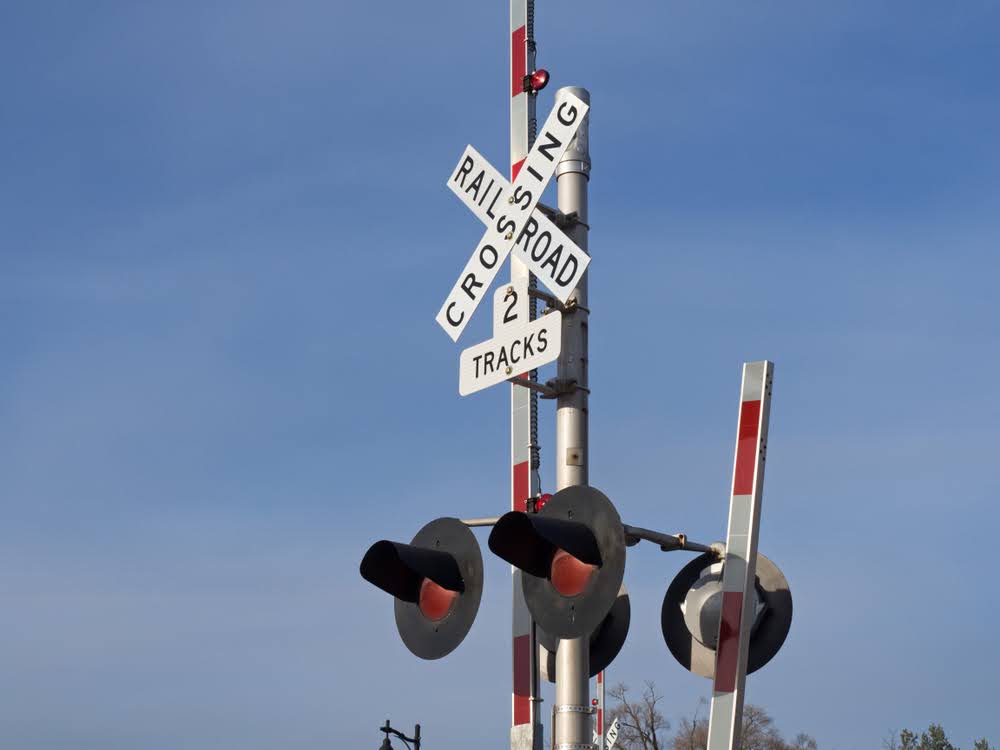
What To Do When Approaching a Railroad Crossing
As a rule of thumb, always, always, ALWAYS err on the side of caution.
Not taking the time to think through your next decision when approaching tracks or ignoring passive and active railroad signs can mean the difference between a calm drive and a serious injury.
Think of it as navigating the busy streets of a city. You have to be constantly aware of your surroundings, which includes looking both ways before crossing the street and keeping an eye out for possible cars that may not be prepared to yield to pedestrians.
Keep in mind what is and isn’t illegal when navigating railroad tracks. It’s important to note what laws exist about being outside a vehicle, including that it is prohibited to walk/trespass on train tracks.
Keep these tips in mind when approaching railroad crossing signs or discovering any tracks in general:
-
- The moment you come across any lights or signs close to or around train tracks, stop and read them. Even if it takes an extra second or stopping altogether, it is better safe than sorry.
-
- Don’t stop right at the end of the train tracks. Halting your vehicle right before a pavement marking is recommended, or at least 15 feet away from the track. Too close chances the risk of being clipped by the incoming train.
-
- Always wait for the railroad crossing gates to rise completely and for flashing lights to stop before crossing. If there are no gates, then wait a few extra moments once you have made sure the train and all its train cars have passed.
-
- Once you start driving across the train tracks, don’t stop. Only do so once you have made it the whole way across. If you do get stuck, immediately exit the vehicle (even if there is no incoming train) and put as much distance from you and the track as possible before calling for help.
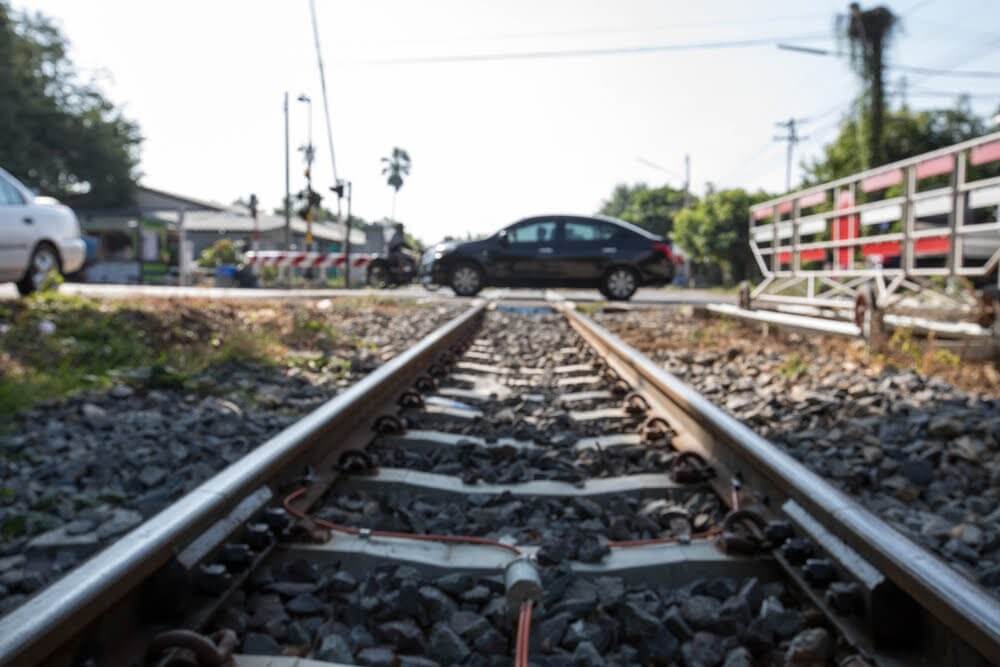
What Vehicles Must Stop At All Railroad Crossings?
In short: all vehicles do! Even if the crossing signals aren’t active, cars and other vehicles should at least slow down or pause before making their way over the tracks.
There are no exceptions to the general motor rules for safety related to train tracks. Cars, trucks, and even motorcycles have to abide by the laws, same as if they were at a regular stoplight or about to merge onto a highway.
You might have heard questions regarding why buses stop at railroad tracks. There are no exceptions to the rules. In fact, they are highly encouraged to follow them due to several reasons.
- They (like trucks and large trailers) are much larger vehicles carrying a great deal more passengers than most smaller ones.
- Their size may contribute to them needing/taking a bit more time to cross the tracks.
Buses (especially school buses) are required by law to stop (or rather, yield) to any sort of railroad tracks, so always keep this in mind.
When Stopping Your Vehicle
Drivers should always remember to:
-
- Gradually come to a complete stop.
-
- Look and listen closely for any incoming trains for either direction of the tracks.
-
- Be aware of the amount of space provided on the other side of the tracks so that upon crossing, the vehicle will not have any part lingering on the tracks.
-
- Avoid shifting gears while moving across the tracks.
These rules and directions may seem a bit overwhelming (or even silly at times), but they are important for your and the incoming train’s safety. Just as if you were crossing a busy street or road, taking that extra second to look both ways is important.
Being familiar with these signs is key to navigating areas with railroads. If you ever find yourself doubting what you should do when tracks are in sight, trust your instincts; pause, examine your surroundings, and listen for any signs of danger. Do that, and you’re good to go!
Take a ride with us and see many of our engines and tracks in person. Book your tickets and see all that Strasburg Rail Road has to offer today!

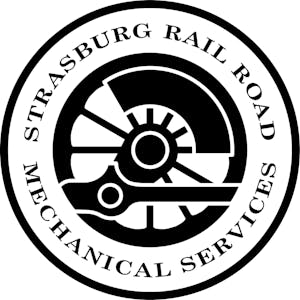 Go behind the scenes on a tour of our renowned mechanical shop and learn all about how we build and refurbish our historic trains!
Go behind the scenes on a tour of our renowned mechanical shop and learn all about how we build and refurbish our historic trains!